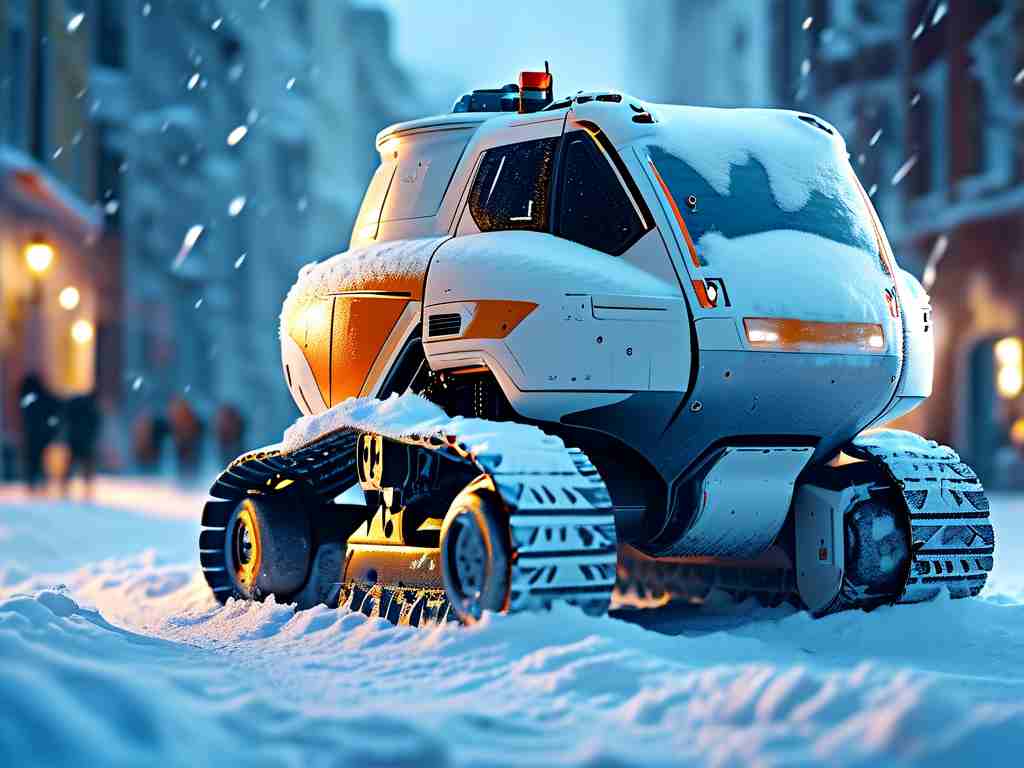As winter storms intensify across northern latitudes, autonomous snow removal robots are emerging as game-changers in urban management and residential maintenance. These intelligent machines combine advanced sensors, AI-driven navigation, and robust mechanical designs to tackle snow accumulation with unprecedented efficiency. Unlike traditional snowblowers or plow trucks, these self-operating systems work around the clock without human intervention, fundamentally reshaping how communities approach winter preparedness.

Technical Foundations
Modern snow-clearing robots leverage LiDAR and 3D mapping technologies to perceive their environment with centimeter-level accuracy. The Clearpath SNOBot X3 model, for instance, uses dual-spectrum thermal imaging to distinguish between snowpack and paved surfaces while avoiding buried obstacles. This technological sophistication enables precise blade adjustments and optimized snow-throwing trajectories, reducing energy waste compared to conventional equipment.
At the core of these machines lies adaptive pathfinding software that analyzes real-time weather data from integrated meteorological feeds. When a Nor'easter approaches, systems like WinterTech’s Guardian series automatically activate pre-treatment protocols, deploying eco-friendly brine solutions before the first flakes fall. This proactive strategy prevents ice bonding – a critical advancement that manual crews often overlook during rapid-response scenarios.
Operational Advantages
The economic argument for robotic snow removal grows stronger with each harsh winter. Pittsburgh International Airport’s 2025 trial demonstrated a 40% reduction in de-icing fluid consumption after deploying six autonomous units across its 10,000-acre complex. Municipalities in Hokkaido report similar successes, where fleets of compact robots maintain narrow pedestrian pathways that full-sized plows cannot access.
Safety improvements prove equally compelling. The National Institute for Occupational Safety estimates 15,000 snow-related injuries annually in the United States alone, predominantly from slips and equipment accidents. Robotic systems eliminate these risks by operating in closed-loop environments with geofencing controls. During Boston’s record 2026 snowfall, MIT’s experimental IceBreaker units cleared rooftop solar arrays without endangering maintenance crews.
Environmental Considerations
Manufacturers are addressing sustainability concerns through innovative power solutions. The Norwegian-designed Nivis Q5 runs on repurposed EV batteries, achieving 14 hours of continuous operation on a single charge. More radical prototypes from Swiss labs utilize Stirling engines fueled by snow-melt temperature differentials, though commercial viability remains unproven.
Salt management represents another frontier. Traditional snow-melting practices contribute to soil salinity and water contamination, but autonomous systems apply precise mineral mixtures through computerized spreaders. Quebec’s municipal partnership with RoboPlow Inc. has reduced chloride usage by 62% while maintaining equivalent road safety standards.
Implementation Challenges
Despite clear benefits, adoption barriers persist. Initial costs remain steep, with enterprise-grade units like the PlowMaster 9000 retailing at $85,000 – a significant investment for small municipalities. Regulatory frameworks also lag behind the technology; only 14 U.S. states have established clear guidelines for autonomous snow equipment on public roads.
Technical limitations surface in extreme conditions. During Alberta’s 2027 ice storm, multiple robotic plows malfunctioned when freezing rain coated their sensor arrays. Manufacturers now offer heated lens enclosures and failsafe manual override systems, but reliability in sub -40°C temperatures continues to challenge engineers.
Future Trajectories
The next generation of snow robots will likely incorporate swarm intelligence capabilities. Researchers at ETH Zurich recently demonstrated a coordinated fleet of 20 drones that cleared a football field in 18 minutes through distributed task allocation. Such systems could revolutionize large-scale operations at shipping ports or solar farms.
Advancements in material science promise lighter yet more durable designs. Graphene-reinforced polycarbonate blades tested in Siberia’s Yamal Peninsula withstood 800 hours of abrasive ice contact without measurable wear. When paired with self-healing rubber tracks, these components could extend equipment lifespans beyond a decade.
As climate patterns grow more erratic, autonomous snow removal technology offers a scalable solution for winter management. From suburban driveways to transcontinental highways, these machines represent not just convenience, but a necessary evolution in humanity’s relationship with extreme weather. The coming decade will determine whether we embrace this mechanical workforce or cling to increasingly inadequate traditional methods.









